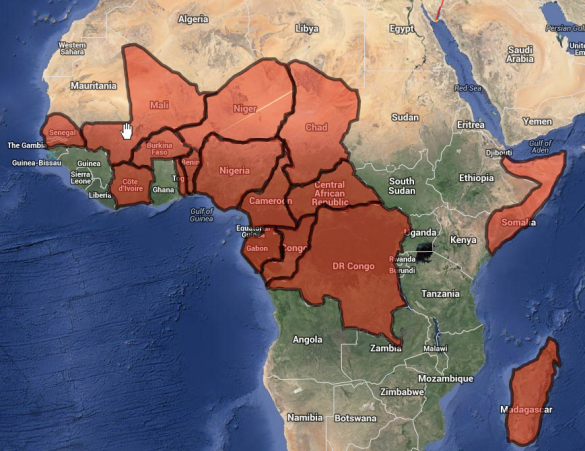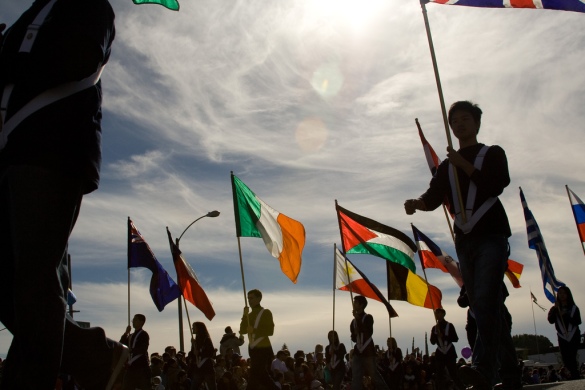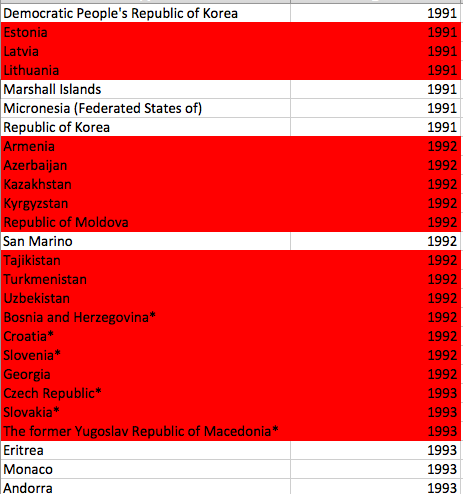After learning how to build a basic html scraper in Google Drive a couple of weeks ago on a data journalism intensive day, I thought I’d give it a try outside the classroom.
193 countries are member states of the United Nations today but when it was first formed in 1945, there were only 51 member states (49 of the original ones remain).
Since then the organisation has grown substantially, but I wanted to take a closer look at the years countries joined – were there any spikes in membership?

See full version on Datawrapper
The bar chart above shows there certainly were spikes in membership. Discounting the first burst of activity in 1945, there were several smaller but significant influxes of countries into the UN – 1955, 1960 and 1991-1993.
The 1991-1993 surge: the break-up of the Soviet Union
While the 1990s spike in membership can be explained by the break-up of the former Soviet Union with 18 out of the 25 countries joining in that period being former Soviet states, why did significant numbers of countries join in 1955 and 1960?
The 1960 surge: worldwide decolonisation

Load full interactive version on Scribble Maps
According to the UN’s official website the spike in the 1960s was its biggest increase in membership in any one year and was due to increasing numbers of countries being decolinised – all 17 new states that joined that year were nearly independent ones, with 16 of them from Afica (the 17th was Cyprus).
1955 – the year the allies finally allowed former axis countries in
Why there was an earlier increase in numbers in 1955 is even more interesting though – as most of the countries that got given membership status in that year had either had prior applications for admittance rejected by the UN security council or had them put on hold for years – Albania first applied in 1946, and Finland in 1947.
The reason it took so long for many countries to get admitted was becuase the UN was orginally founded as an organisation for the victors of World War II, so countries which had previously had ties with Hitler’s Germany such as Austria nad Spain had to prove they had cut any fascist ties before they could join. Indeed, of the 16 members who were allowed to join, Italy was a former axis member, and Romania, Bulgaria, Finland, Hungary, Spain and Austria had all at some point during the Second World War aligned themselves with Germany. Cambodia was also occupied by Japan for a short period in 1945.
But the 1955 package deal that saw 16 countries admitted was also crucial for making the UN a less homogeneous place – indeed, the other reason why some countries had to wait so long to join was because of the cold war and a clear divide appearing in the UN between countries supporting the US and countries that supported the USSR and a determination by both sides not to increase the other’s power in the UN.
Ultimately though the 1955 move had one of the biggest impacts on how the UN developed to look like what it does today as it broke the US’ strong hold over the UN and gave the USSR a much fairer footing.

